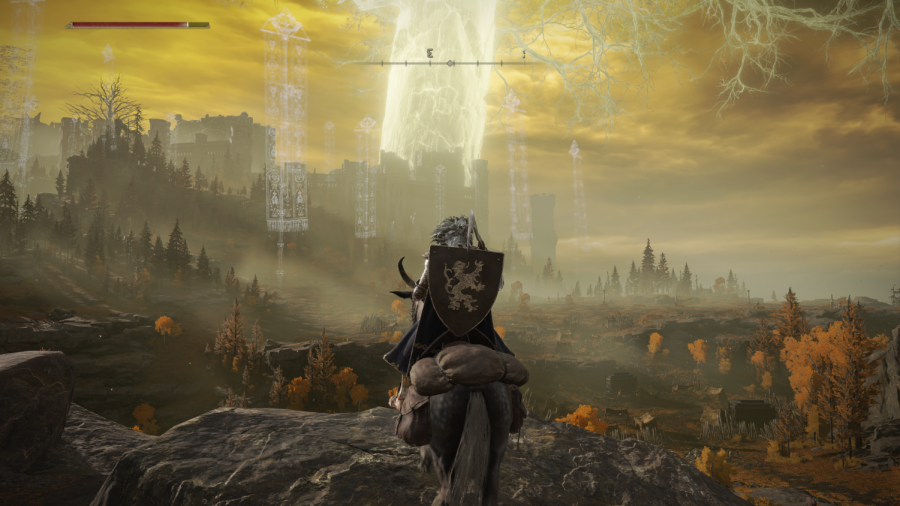The latest and most ambitious project from renowned Japanese development studio FROM Software has set a new bar for open world games and perhaps even video games as a whole, showcasing a mastery of subtle perfection in gameplay, aesthetics and world design that the industry has never before seen.
Not even halfway through playing I was able to easily make the conclusion that FROM has created the best open world video game experience of all time, all the more impressive considering “Elden Ring” is their first dip into this genre. It is an experience with little to no interruption, linearity, guidance or rigidity of any sort.
Throughout my 130-hour journey to complete “Elden Ring” to my satisfaction, I was fully engrossed in nearly everything the game had to offer. The design philosophy that has emanated from each of FROM’s releases over the past decade translates flawlessly into the open world genre. The well-established formula from the “Dark Souls” franchise—one that awarded the original game the “Ultimate Game of All Time” award at the Golden Joystick Awards last November—is doubled, if not tripled in scope and succeeds on all fronts.
This philosophy is one of complete freedom for the player. As all games with FROM’s signature “Soulsborne” style, “Elden Ring” does not hold your hand, but throws you into a beautiful and impressive world to simply play, discover and experience an adventure. The absence of an obnoxious checklist-style quest log gives you the satisfaction of solving a big puzzle rather than the game coddling the player to the next goal.
The player experience can vary wildly, in the best way. The myriad unique ways to build your character and the weapons or spells you use, the ways you can approach a boss fight, the items and buffs you use, the quests and endings you choose to follow, all make each playthrough feel unique, like each player’s experience alone. The game also offers an easy way to completely change the stat build of your character multiple times in a single playthrough at essentially no cost.
Exploring the world awards you with dozens of incredible weapon designs, magic spells and incantations, each of which compliments a specific playstyle and character build. Weapons have a skill attached to them, known as “Ashes of War,” and basic weapons allow you to choose from a set of skills to use via the weaponsmith. Many of these visually stunning skills are exceedingly strong, and I relied on and loved experimenting with them.
All of this is true without the game ever telling you what you “should” be doing, not only giving you freedom but respecting your intelligence to figure out what works best.
But the primary factor that makes the open world so good is the sheer variety of encounters, along with the meaningful rewards you receive from exploration. The interconnected world is almost overwhelming in size, but you can attempt almost any area in any order you like, never forcing you down one path or to defeat one boss.
My typical playstyle in a game such as this is to cover every square-foot in one area, leaving no stone unturned before moving on to the next. Typically this leaves me feeling somewhat silly, as most games rarely have anything to offer more than unique visuals. “Elden Ring,” however, rewarded my meticulous exploration—and thus respected my time—more than any other game I have played.
So many times I returned to a spot on the map that seemed strangely empty or went left instead of right “just to check,” and ended up finding an entirely new dungeon, valuable weapon, non-playable character (NPC) with an entire questline, unique boss, or some beautiful Eldritch horror that etched itself in my mind.
This open world experience would not have been as enjoyable if it weren’t for the game’s gritty, beautiful and mesmerizing dark fantasy aesthetic, which it nails in every single environment. The opening areas, “Limgrave” and “Liurnia,” are drop-dead gorgeous, and I absolutely loved taking my time through them. Every location was a sight to behold, often full of pieces of horror and suffering that perfectly contrast the melancholic beauty present in the bigger picture.
Many of the NPCs emulate this contrast of both dread and beauty. “Elden Ring” features some of the most involved and memorable NPCs in the developer’s history. The questlines these NPCs offer seamlessly interweave with others, beautifully building the game’s fascinating world, “The Lands Between.” There are a number of emotional moments if you put in the time to follow a character on their own journey, and there are also meaningful rewards, including the game’s several alternate endings, if you choose to see them through.
“Elden Ring” is ground-breaking, breathtaking and unforgettable. It will rightfully be remembered as a defining entry in the open world genre and as one of the single greatest video games ever made. Few and far between are games that truly pull me in and hold such a tight grip for as long as “Elden Ring.”
There isn’t much room for improvement, especially if “Elden Ring” is compared to other open world games, and the much-discussed balancing issues do not come close to overshadowing the unwavering pinnacle quality the game outputs from beginning to end. “Elden Ring” is a masterpiece that I and the industry as a whole will surely never forget.
10/10




